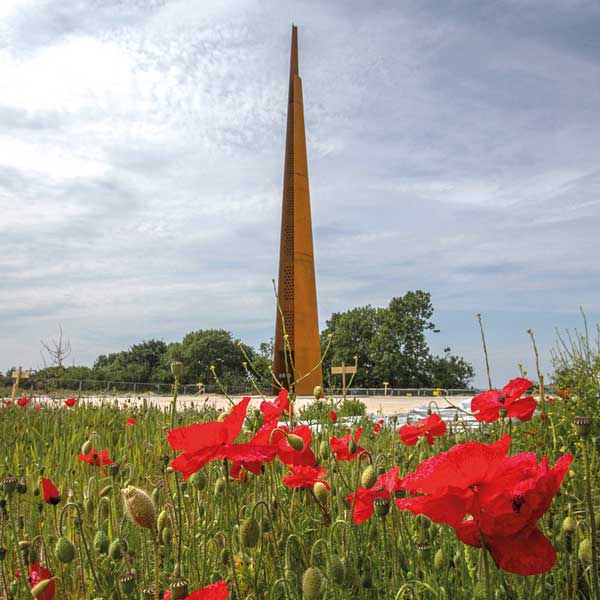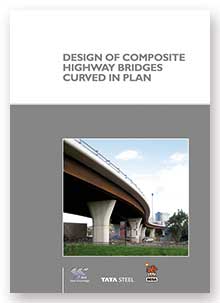Projects and Features
Steel extends viaduct’s lifespan
The A38(M) Tame Valley Viaduct, a critical piece of transportation infrastructure that links the M6 with Birmingham city centre, is being strengthened and refurbished to preserve its longevity and minimise the need for future work.
FACT FILE
A38(M) Tame Valley Viaduct, Birmingham
Main client: Birmingham City Council
Main contractor: VolkerFitzpatrick
Structural engineer: Jacobs Realis
Steelwork contractor: Taziker Industrial
Steel tonnage: 180t
Carrying approximately 80,000 vehicles a day, the Tame Valley Viaduct forms the northern end of the A38(M) Aston Expressway, one of the Midlands’ most important highways, linking the UK’s second city with ‘Spaghetti Junction’ and the wider motorway network.
Built in the early 1970s, the steel composite structure was not designed for modern-day traffic volumes and due to its advanced age, it has begun to show signs of deterioration.
To alleviate this problem and extend the lifespan of the viaduct, main contractor VolkerFitzpatrick is undertaking a four-and-a-half-year programme to strengthen and refurbish the steel superstructure.
Due to its importance and to minimise traffic disruption, the viaduct has to remain open throughout the works. To enable this, VolkerFitzpatrick has erected a series of high-level access platforms, which span from pier to pier and allow all of the work to be carried out from beneath the roadway.
To strengthen the viaduct, the programme includes the installation of new steelwork stiffeners to the inside of the viaduct’s 3m-wide × 1.9m-deep box girders, via welded and bolted connections. Alongside this work, all of the original welds are being tested and repaired where necessary.
Overall, the viaduct is 640m long and 26m-wide with a total of 22 spans. There are four box girders supporting the structure along the majority of its length. The exception being the two slightly wider northern most spans that link to Spaghetti Junction, which have five supporting girders.
“In order to make the initial phase of the work as efficient and quick as possible, we have two steelwork contractors repairing the defective welds and adding new steelwork to strengthen the viaduct,” says VolkerFitzpatrick Senior Project Manager David Landeryou.
“Taziker Industrial are working from the northern end of the viaduct and will complete 11 spans, while another contractor is undertaking the same work on the southern section.”
Both steelwork contractors are scheduled to complete their strengthening works and meet in the middle of the structure in mid-2025. As well as this work, Taziker is also contracted to grit blast and repaint the entire superstructure with a new anti-corrosion coating. This part of the programme, which is due to complete in 2026, consists of 49,000m² of internal paintwork and 38,000m² of external paintwork.
Taziker Industrial Project Manager David Shrader, says: “The work is progressing really well, the grit blasting programme is ahead of schedule and the strengthening works are set to complete as planned.
“Two spans of the viaduct are over railway lines and these sections will be completed in two blockades, which we’re expecting to take place during summer.”
Adding to the complexity of the scheme, the viaduct also crosses the River Tame, a number of local roads and also spans over numerous business premises.
The access platforms are sufficiently shrouded to prevent any items from falling onto any of the assets below, while a steelwork strengthening trial, undertaken by the project team three years ago has helped with the current programme.
“As we’ve progressed through the project, the insight and knowledge we gained from completing a trial on the viaduct prior to our award of the full structural works has been invaluable,” adds Mr Shrader.
“It’s a huge structure and we’ve been able to get to grips with the task at hand much quicker due to knowing exactly what we’re dealing with.”
Another significant challenge of the project is the fact that all of the strengthening and testing work is being carried out inside of the box girders and their connecting cross boxes.
Via the platforms, the project’s workers gain entry into the girders through access points, measuring approximately 530mm x 530mm, which are located intermittently along the entire length of the superstructure.
This working environment is classified as a confined space and so all of the workers hold medium to high risk confined space training. Safety and worker welfare is paramount and so each team member has a gas monitor and escape kit with an attached digital tracking device, which allows the site office to see exactly where everyone is within each girder. If anyone is taken ill, their location is already known and VolkerFitzpatrick’s first aid rescue team, who are on permanent standby, would quickly proceed to evacuate the worker.
The confined nature of the workspace has also had a bearing on the project’s steelwork as all materials and equipment must be able to fit through the girder access points.
In total 1,900 steel stiffeners are being installed within the viaduct’s girders. Providing the superstructure with the required extra load capacity, these steel members are fabricated plates, which are up to 30mm-thick. The majority of the plates vary in size from 300mm × 300mm × 15mm up to 600mm × 450mm × 20 and weigh up to 100kg.
The steelwork elements are lifted up to the access points by hoist, before being manoeuvred into the girder. The steelwork is then installed with either a bolted or welded connection.
As well as the new steelwork being installed, more than 5,000 welded connections are being repaired, following an exhaustive testing process. Keeping this work on schedule, there are currently up to 14 welding teams onsite.
Engaging with the community is also a key element of this project. The team has provided employment opportunities for local people and run a number of recruitment days in partnership with neighbourhood groups.
As well as working with its supply chain contractors from the surrounding area, VolkerFitzpatrick says it is continually engaging with nearby secondary schools, colleges and youth charities, while also being committed to providing a minimum of seven apprenticeship placements during the scheme’s lifetime.
Summing up, West Midlands Mayor Andy Street, says: “The project is important as the viaduct would have needed weight and width restrictions within a few years and one day could have been closed down completely.
“The 80,000 vehicles a day it carries is far more than what it was designed for when it opened and so I am delighted that, we are pressing on and getting this essential maintenance work done.
“We are making a huge effort to encourage people to use public transport across the West Midlands, but people who rely on the car cannot be ignored and roads such as the Aston Expressway remain a critical part of our region’s infrastructure.”


















